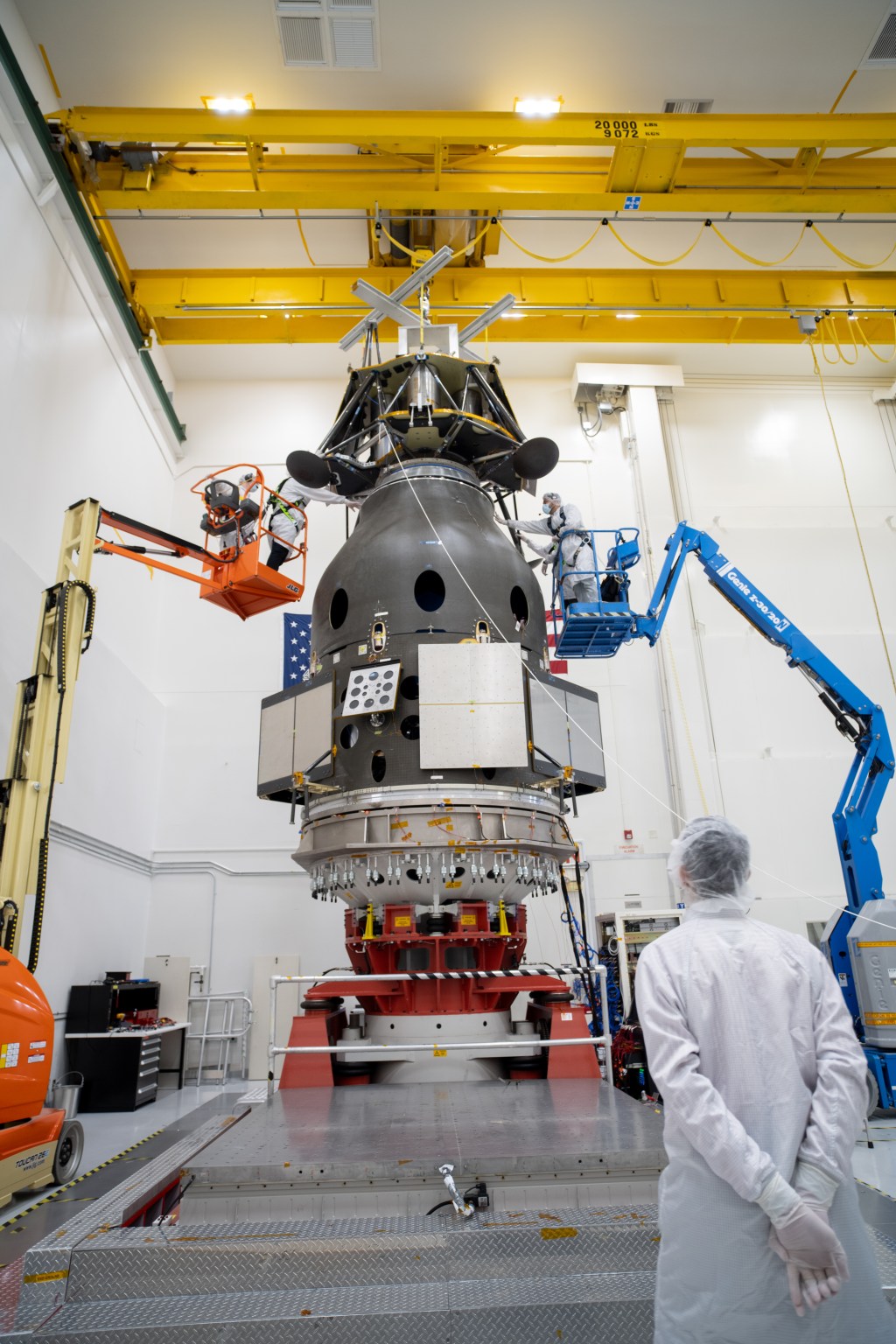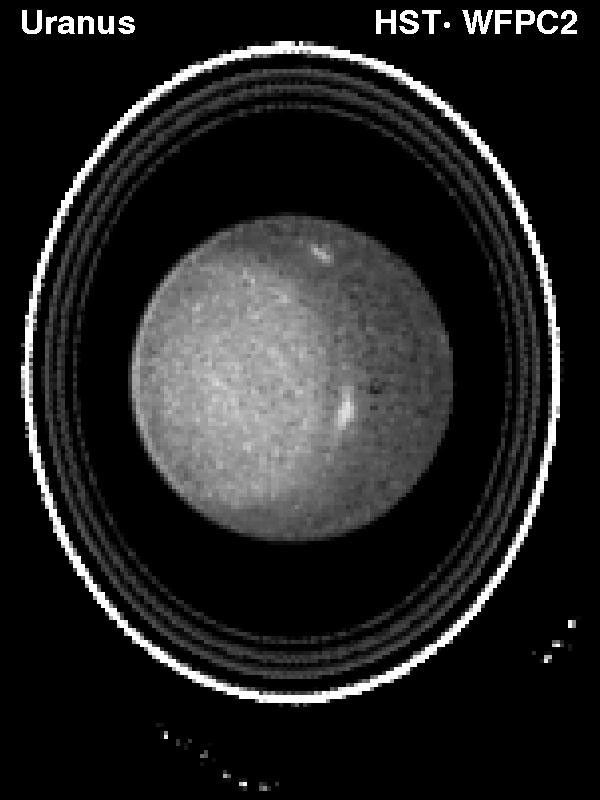BACKGROUND INFORMATION: URANUS
Hubble Observes Uranus
The Wide Field/Planetary Camera 2 of NASA's Hubble Space Telescope provided the first detailed view of Uranus, its satellites and the ring structure, since the 1986 fly-by of the planet by the Voyager 2 spacecraft. During the Voyager encounter ten new satellites were discovered and precise orbits were determined. Since then, none of these inner satellites has been further observed, and no detailed observations of the rings have been possible.
Orbits of Uranus' Satellites
Detailed measurements of the positions and motions of the inner satellites of Uranus will allow their orbits to be calculated more precisely. This in turn will allow the further investigation of the unusual resonances (ratios of their orbital periods) which have been found among the inner satellites of Uranus. With this increase in accuracy, astronomers can better probe the unusual dynamics of this complicated system. Though initial data on the positions and motions of the satellite were obtained by Voyager 2, the moons have orbited about the planet nearly 10,000 times since the 1986 fly-by. By measuring current satellite positions, the "accumulated" effects of small errors in satellite motions since the time of the Voyager 2 encounter can be determined and precise corrections can be made to orbital elements, calculated from Voyager data.
Colors and Brightness of Uranus' Satellites
Hubble can help reveal the mineralogical composition of the moons by observing the brightness of the inner satellites in four different colors. This may permit a more detailed understanding of the origin or source of the satellites, and how Uranus' satellite system has evolved since the planet's formation 4.5 billion years ago.
The Epsilon Ring
Uranus' ring system was discovered in March, 1977 from ground-based observations of stellar occultations, where the star "blinked" as it passed behind each ring. Details about the rings, including structure and brightness, were not determined until the Voyager 2 fly-by in 1986. In the HST observations, the bright outermost epsilon ring can be clearly seen and accurate measurement of brightness and color (photometry) is now feasible. Structure related to the inner rings is also visible. Accurate photometry on the epsilon ring may indicate the source, or origin, of the particles that compose the rings.
Cloud Structure in Upper Atmosphere
HST reveals a pair of bright clouds (20oS and 35oS latitude) in Uranus' southern (Sun pointing) hemisphere. Similar structures were observed by Voyager during the fly-by, though the apparent increase in contrast may be due to the different Sun illumination since the Voyager fly-by. Then, the Sun was over the "south pole" and there were no variations in the position of the Sun during a day. At present, there are seasonal illumination changes since the orbital motion has moved the pole about 35o away from the Sun. These observations may provide information on this unique system which, during some portions of the "year," has normal daily variations of sunlight and, during other seasons when the Sun "hangs" over the south pole, has no daily changes in sunlight.































